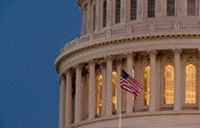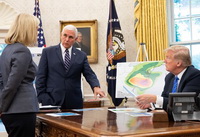Following the Nov. 6 mid-term elections, a “Lame Duck” session of Congress is expected to consider various tax policies of importance to commercial real estate.
 |
|
Several tax issues of importance to real estate may be in play during the November “Lame Duck” congressional session, including condo tax accounting rules; technical corrections; the cost recovery period for qualified improvement property (QIP);and tax extenders. |
- As part of a potential year-end omnibus spending bill to fund the government, tax policies that may be addressed include condo tax accounting rules; technical corrections; the cost recovery period for qualified improvement property (QIP); and tax extenders. (Roundtable Weekly, Oct. 12)
- Current condo tax accounting rules require multifamily developers of buildings with five or more residential units to recognize income and pay tax on their expected profit as construction is ongoing — well before pre-sale transactions are closed and full payment is due from the buyer. This mismatch of cash flow and tax liability prevents income tax deferment until a condo building is finished. Home builders of single-family homes, townhouses and row houses are not subject to this accounting rule restriction.
- A House bill introduced last summer by Reps. Carlos Curbelo (R-FL) and Joe Crowley (D-NY) aimed to correct this disparity. Although the Fair Accounting for Condominium Construction Act (H.R. 3659) stalled in 2017, it could serve as a template for inclusion in year-end tax legislation. The Real Estate Roundtable supports lawmakers’ efforts to pass H.R. 3659.
- Other congressional efforts to ensure that development accounting rules treat condos like other residential construction included a 2016 letter from 10 members of the Senate Finance Committee urging regulatory corrections to former Treasury Secretary Jack Lew.
- Roundtable President and CEO Jeffrey DeBoer on April 7, 2017 sent a letter to Treasury Secretary Steven Mnuchin outlining eight regulatory actions the Treasury Department could take to stimulate new real estate investment, job creation, and economic growth. Among the recommendations addressed in the letter are tax accounting for new condominium construction; the Foreign Investment in Real Property Tax Act, tax treatment of private real estate funds and partnership tax rules.
Last week, an article on the condo tax accounting issue in The Real Deal included a quote from Roundtable Senior Vice President & Counsel Ryan McCormick, who commented on the outlook for correcting the current rules. “Legislation may be the most likely route, in light of all the work ongoing at Treasury with tax reform,” McCormick said.









